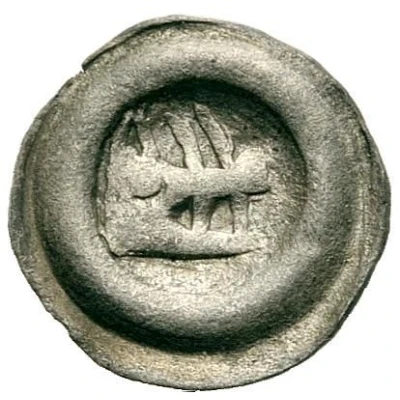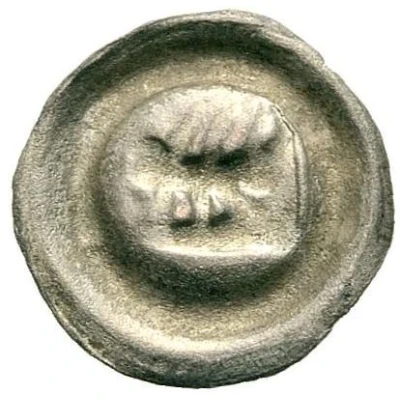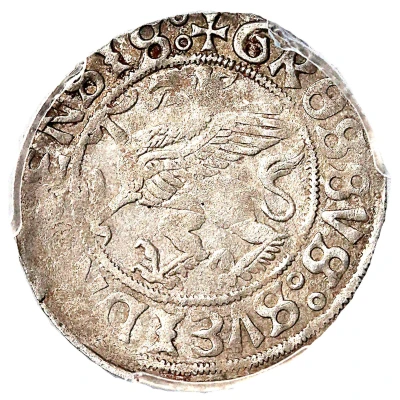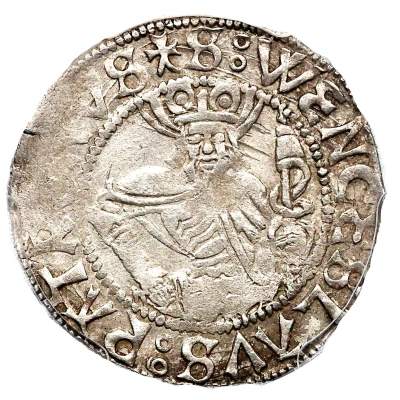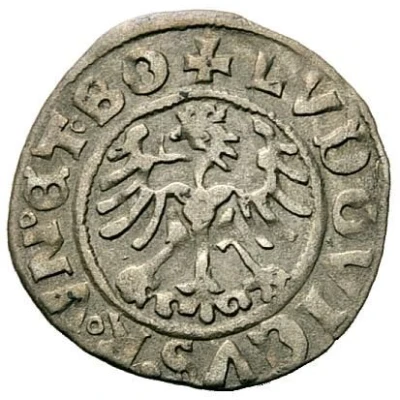
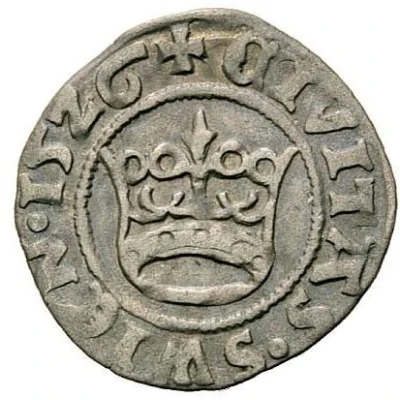

© Numismatik Lanz Auctions
½ Groschen - Ludwig Jagiellon
| Silver | 0.91 g | 18 mm |
| Issuer | City of Schweidnitz (Silesia) |
|---|---|
| Period | Free city |
| Type | Standard circulation coin |
| Years | 1518-1526 |
| Value | ½ Groschen |
| Currency | Groschen |
| Composition | Silver |
| Weight | 0.91 g |
| Diameter | 18 mm |
| Thickness | 1.0 mm |
| Shape | Round (irregular) |
| Technique | Hammered |
| Orientation | Coin alignment ↑↓ |
| Demonetized | Yes |
| Updated | 2024-10-04 |
| Numista | N#65413 |
|---|---|
| Rarity index | 55% |
Reverse
Eagle in circle, lettering around
Script: Latin (uncial)
Lettering: +CIVITAS SWIEN date
Lettering (regular font): +CIVITAS SWIEN DATE
Translation:
+CIVITAS.SWIEN[ie]
City of Świdnica/Schweidnitz
Edge
Plain
Comment
Louis was the son of Ladislaus V Jagiello and his fourth wife, Anne de Foix. His father died in 1516 and the minor Louis II ascended to the throne of Hungary and Bohemia upon his father's death. Louis had been adopted by Holy Roman Emperor Maximilian I in 1515. When Maximilian I died in 1519, Louis was raised by his legal guardian Georg von Hohenzollern, margrave of Brandenburg-Ansbach. Louis owed allegiance to the Imperial Habsburgs as a member of the Order of the Golden Fleece.In 1522 Louis II was married to Mary of Habsburg, a Habsburg princess, granddaughter of Maximilian I, as stipulated by an Imperial congress at Vienna in 1515. His sister Anne was married to Archduke Ferdinand of Austria, then a governor on behalf of his brother Charles V, and later Emperor Ferdinand I. Louis died at the Battle of Mohács in 1526. Ferdinand and Anne succeeded him in his Kingdom of Bohemia, but Hungary, largely conquered by the Turks, was further put into succession dispute between John Zápolya on one hand and Ferdinand and Anne on the other.
MINTED in Swidnica, Poland:
Swidnica, or German: Schweidnitz, as a town traditionally dates back to 1250. But no founding act has survived that would confirm this fact. In the beginning, the town belonged to the Princedom of Wroclaw and experienced two important privileges conducive to its development. By 1290, Swidnica had city walls and six gates, crafts and trade were blossoming, and it had become the capital of the entire princedom. At the end of the 14th century the city was under control of Bohemia, part of the Holy Roman Empire and a long period of growth began. In 1471, there were 47 trade guilds in operation, nearly 300 homes had the rights to brew beer, and large cattle and hops fairs were organized.
Imitation of Polish półgrosz (half-grosz). The coins with year 1526 were minted up to 1528. Medal-oriented samples exist.
Interesting fact
The ½ Groschen coin from the City of Schweidnitz (Silesia) made of Silver weighing 0.91 g is interesting because it was issued during the reign of Ludwig Jagiellon, who was the King of Hungary and Bohemia, and later became the King of Poland. This coin is a rare example of a coin that was issued during his reign and is a valuable collector's item for numismatists.
Price
| Date | Mintage | VG | F | VF | XF | AU | UNC |
|---|---|---|---|---|---|---|---|
| 1526 | - | - | - | - | - | - |
Values in the table are based on evaluations by sales realized on Internet platforms. They serve as an indication only for ½ Groschen - Ludwig Jagiellon 1518-1526 coin.
